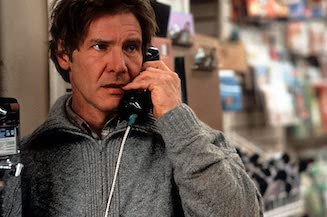The Number One Movie in America: The Fugitive
By Sean Collier
May 5, 2020
Labor Day is not a big moviegoing holiday.
This box-office factoid stands to reason; many people use the holiday as an excuse for one final outdoor weekend before autumn takes hold, opting to fire up the grill and relax al fresco. Few use that extra day as an opportunity to get back to the multiplex.
No movie has grossed more over Labor Day weekend than the $30.5 million earned by Rob Zombie’s “Halloween” remake in 2007. (Rob Zombie fans don’t get invited to many barbecues, apparently.) Most of the top-grossing Labor Day flicks — a category which does not include the 20XX flop “Labor Day” — are similar, ho-hum earners that happened to come out around the holiday.
“The Fugitive” represents perhaps the biggest exception to this rule. The thriller earned more than $17.2 million over the 1993 holiday weekend; the inflation math gets tricky, but it may be the case that Harrison Ford and Tommy Lee Jones drew more people away from the back porch and into the multiplex over Labor Day weekend than any other film.
And it was the movie’s fifth weekend in release.
“The Fugitive” was a runaway hit, easily winning its opening frame (Aug. 6-8, 1993) with $23.7 million and taking the title for a further five weekends. It would earn a total of $183.8 million at domestic cinemas, finishing third for the year, behind only “Jurassic Park” and “Mrs. Doubtfire.” Ford was at the height of his stardom (though the height of his stardom could be said to last about two decades), and the pairing with Jones was dynamic enough that even the then-nascent MTV Movie Awards couldn’t help but award the pair its Best Duo prize.
“The Fugitive” has a hook that makes it perfectly suited to word-of-mouth. Anyone with hazy memories of the film certainly recalls its two dramatic set pieces: The prison-bus crash which leads to a train derailment (and inevitable inferno), with Ford scampering away from the wreckage in handcuffs; And a desperate Ford plunging into the water cascading off the side of a dam to escape his pursuers. (While we’re here: No, you could not survive that jump.)
What fewer remember is the timing. Both of those scenes take place in the first 45 minutes of “The Fugitive.” The rest of the film is memorable; in fact, it’s very good, an often gripping game of cat and mouse run through with a classic whodunit. But the second and third acts of the film are drama; all (or most) of the action is in the first. It’s a film that uses its spectacle to set up its characters, rather than to pay off its stakes.
That’s the kind of structure which leads people to say, “You have got to see this movie.” A guy dodges a crashing train and jumps off of a giant dam — and that’s just the beginning!
Certain aspects of the film are a bit more creaky than others; Ford escapes the odds time and time again with little bit charm and privilege, and the dramatic flashbacks get more than a bit tiring by the time “The Fugitive” passes the two-hour mark. (It’s a hair too long.) But the film was worthy of its box-office domination and multiple Oscar nominations. In a decade full of well-made popcorn fare, this is one of the exemplars — a popular entertainment strong enough to dazzle the droves who are drawn in.
You can picture the conversation over Labor Day hot dogs. Dessert has been consumed, UB40 is coming out of a boom box.
“Have you seen ‘The Fugitive’ yet?”
“No, I haven’t.”
“Well hell, let’s go.”
“The Fugitive” is the subject of tthe latest episode of The Number One Movie in America, a look back at past box-office champions. Each episode’s film is drawn at random from a list of every number-one movie since 1982. Please listen and subscribe!




